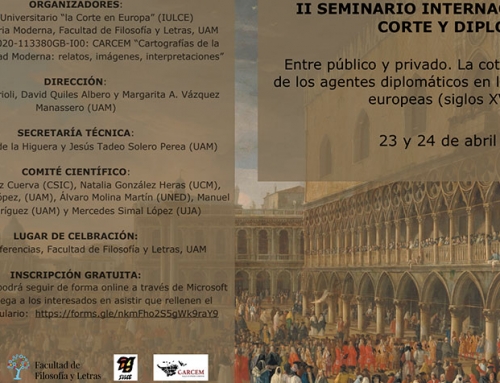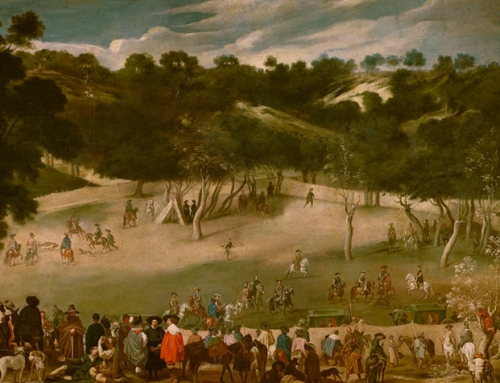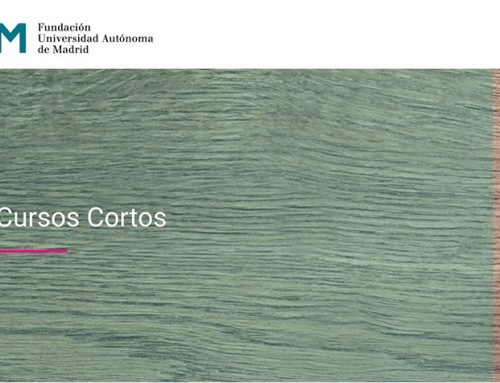Simposio Internacional: Female Succession in Late Medieval an Early Modern Monarchy. Contestation, conflict and compromise.
24 y 26 de mayo. Universidad Rey Juan Carlos, Campus Aranjuez, Edificio Pavia
Female successionto a royal thronecame in many forms across the span of European history.
It could quite literally change the course of history. The most well-known form is direct succession: Mary or Elizabeth of England to the throne of their father Henry VIII; Isabel of Castile succeeding her brother Enrique IV; or Maria Theresa of Austria succeeding her father Charles VI as queen of Hungary and Bohemia. But even these were usually restricted by their elite subjects—by law or by custom—to rule in tandem with a husband or a son. Other women did not rule but were conduits through which a royal succession passed, such as Elizabeth Stuart (the‘Winter Queen’) transmitting the English and Scottish thrones from the house of Stuart to that of Hanover; or Marie-Thérèse of Austria, transmitting the Spanish succession from the Habsburgs to the Bourbons. Still others were heirs to thrones until superseded by younger brothers, like the Infanta Isabel Luisa of Portugal, heiress for twenty years until displaced by her brother João V. And still others represented claims that were no longer viable,such as Christina of Denmark, whose claims to her Catholic father’s throne were pushed aside by a Protestant uncle. Some royal women were specifically chosen by their parent to become a sovereign, like Isabel Clara Eugenia in the Low Countries. Some were rulers with quite complex power-sharing arrangements with sons and other malerelatives, like Margaret of Denmarkor Anna Jagiellonka of Poland-Lithuania. Some were symbolic heirs only, like Marie-Thérèse of France (‘Madame Royale’), the daughter of Louis XVI, who was married to the male Bourbon heir to ensure his legitimacy and support for the restoration. And perhaps the mostrare were the women who were not heirsto thronesat all, but seizedpowerfromahusband or son, like Catherine the Great in Russia. In a few situations challenges arose not simply from competing male claims, but from other women (such as Juana la Beltranejain Castile or Anna Leopoldovna in Russia).There are so many variations. Decisions made to allow or prevent a succession could result in the construction of huge empires—notably the Habsburg-Burgundian-Iberian conglomerate—or direct the flow of religious change, or lead to major international conflict.
It is clear that regulations and expectations for hereditary succession in pre-modern Europe did not always match up. While many kingdoms and principalities in theory allowed for female succession, in practice it was usually something to be avoided if at all possible, for avariety of theoretical or practical reasons. When faced with this question in France in the 1320s, Valois legal experts solidified that Kingdom’s thus far vague commitment to a ‘males-only’ policy (‘Salic Law’) and transformed it into a ‘fundamental law’—something that French Catholics later regretted when it foisted the Protestant Henry of Navarre onto the throne in 1589. When faced with similar questions in England, monarchs from Henry I to Henry VIII made attempts to control the succession such that the throne could pass through, but not necessarily to, a woman—for example the expected succession through Lady Jane Grey to an as-yet-unborn son.But direct female succession did in fact happen all across Europe, from Portugal to Poland, and although the Salic Law sticks in the minds of many historians of Europe, it was in fact the exception to the rule. This conference—based in Spain where female succession was perhaps the most ‘normal’ in comparison to other monarchical systems—aims to bring together a discussion of these different varieties of female succession in pre-modern Europe, the barriers sometimes placed to avoid them, and the manoeuverings to get around such barriers.
This international symposium aims tobring together experts from different historiographical fields(history, art history, literature and political thought), with the objective of developing acomparative analysis on the way female royal succession was approached and managed from a transnational and diachronic perspective.By bringing together case studies from across a longtime period (1400 to 1800) and from across Europe, this symposium hopes to understand the greatest breadth of experiences of this topic so crucial to the early development of women’saccess to political power in our history.
This symposium is organised bythe Society for Court Studies and the Universidad Rey JuanCarlos, Madrid (URJC),with support from Purdue University (Indiana), and will be held across three days in May 2023, on the campus of URJC, near the Palace of Aranjuez—a favourite residence for some of Spain’s early modern queens.






